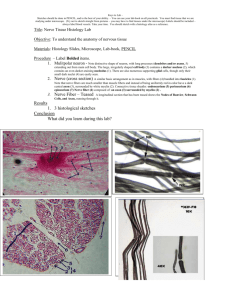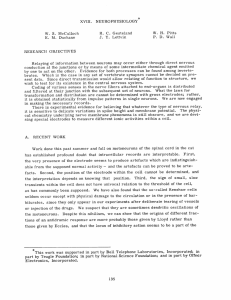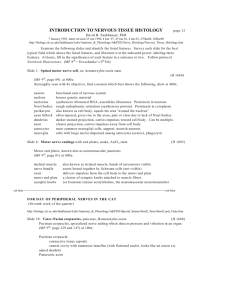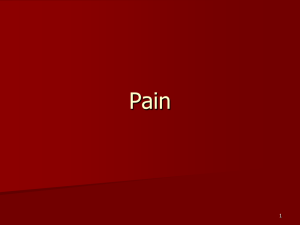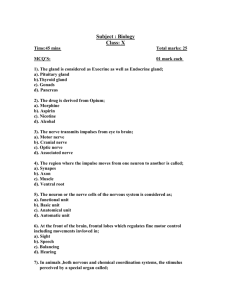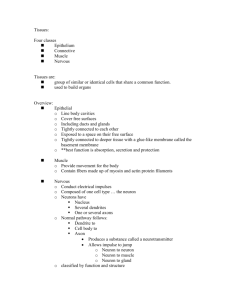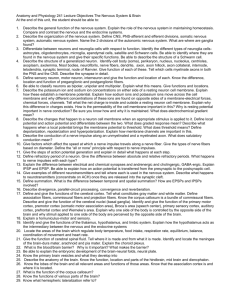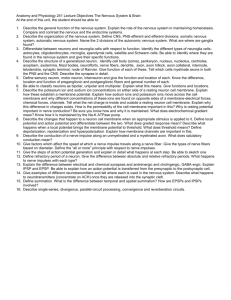Unit 4 Lab 1
advertisement
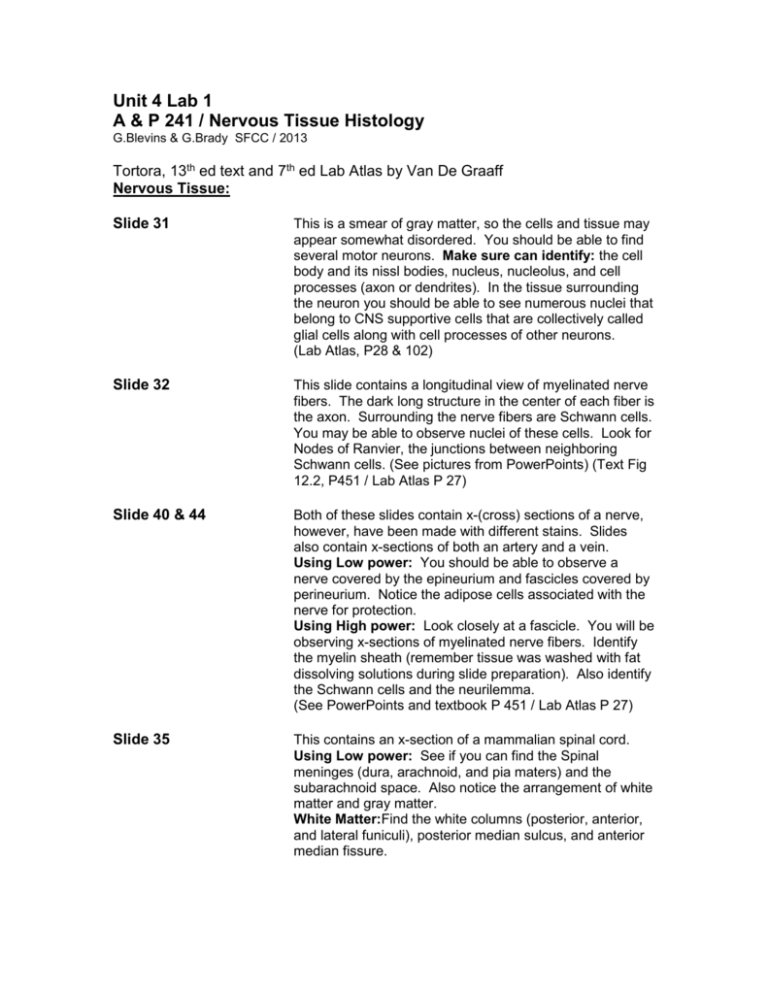
Unit 4 Lab 1 A & P 241 / Nervous Tissue Histology G.Blevins & G.Brady SFCC / 2013 Tortora, 13th ed text and 7th ed Lab Atlas by Van De Graaff Nervous Tissue: Slide 31 This is a smear of gray matter, so the cells and tissue may appear somewhat disordered. You should be able to find several motor neurons. Make sure can identify: the cell body and its nissl bodies, nucleus, nucleolus, and cell processes (axon or dendrites). In the tissue surrounding the neuron you should be able to see numerous nuclei that belong to CNS supportive cells that are collectively called glial cells along with cell processes of other neurons. (Lab Atlas, P28 & 102) Slide 32 This slide contains a longitudinal view of myelinated nerve fibers. The dark long structure in the center of each fiber is the axon. Surrounding the nerve fibers are Schwann cells. You may be able to observe nuclei of these cells. Look for Nodes of Ranvier, the junctions between neighboring Schwann cells. (See pictures from PowerPoints) (Text Fig 12.2, P451 / Lab Atlas P 27) Slide 40 & 44 Both of these slides contain x-(cross) sections of a nerve, however, have been made with different stains. Slides also contain x-sections of both an artery and a vein. Using Low power: You should be able to observe a nerve covered by the epineurium and fascicles covered by perineurium. Notice the adipose cells associated with the nerve for protection. Using High power: Look closely at a fascicle. You will be observing x-sections of myelinated nerve fibers. Identify the myelin sheath (remember tissue was washed with fat dissolving solutions during slide preparation). Also identify the Schwann cells and the neurilemma. (See PowerPoints and textbook P 451 / Lab Atlas P 27) Slide 35 This contains an x-section of a mammalian spinal cord. Using Low power: See if you can find the Spinal meninges (dura, arachnoid, and pia maters) and the subarachnoid space. Also notice the arrangement of white matter and gray matter. White Matter:Find the white columns (posterior, anterior, and lateral funiculi), posterior median sulcus, and anterior median fissure. Gray Matter: Find the posterior (dorsal) gray horns, Anterior (ventral) gray horns, Lateral gray horns, and gray commissure. Using High power: Focus in on one of the ventral gray horns. You should be able to identify all the structures listed for slide 31 above. Now focus in on one of the White funiculi. This is a xsectional view of a tract in the spinal cord. It should appear somewhat similar to the view of a fascicle from slide 40 or 44. You will be observing x-sections of myelinated nerve fibers. Identify the nerve fibers and their associated myelin sheath (remember tissue was washed with fat dissolving solutions during slide preparation). In the CNS the myelin sheath is produced by Oligodendrocytes, a type of glial cell. (See PowerPoints) (Text P. 497 / Lab Atlas P. 28) Slide 34 This slide contains a section taken from the dorsal root ganglion. Observe the large sensory neuron cell bodies and find the nucleus, nucleolus, and nissl bodies. Also notice the satellite cells (you should be able to observe their nuclei) that surround these sensory neuron cells bodies. You may also be able to find nerve fibers (axon or dendrites) on this slide as well. (see PowerPoints) Slide 33 This slide contains teased skeletal muscle fibers in which the fibers have been separated so the neuromuscular junction can be observed. The dark lines are the axon terminals of a motor neuron. The round structures are synaptic end bulbs that contain the neurotransmitter, Acetylcholine. Model of the Multipolar Neuron Find the following structures: nucleus, nucleolus, nissl bodies, neurofibrils, axon, dendrites, and Node of Ranvier Nerve tissue Histology Chart Use this chart as a reference while observing the slides. Make sure you can find the structures listed above or on the Human Nervous System lab guide that are observable on this chart. Spinal cord chart and models Make sure you can find all the structures listed on the Human Nervous System lab guide handout for the spinal cord.
